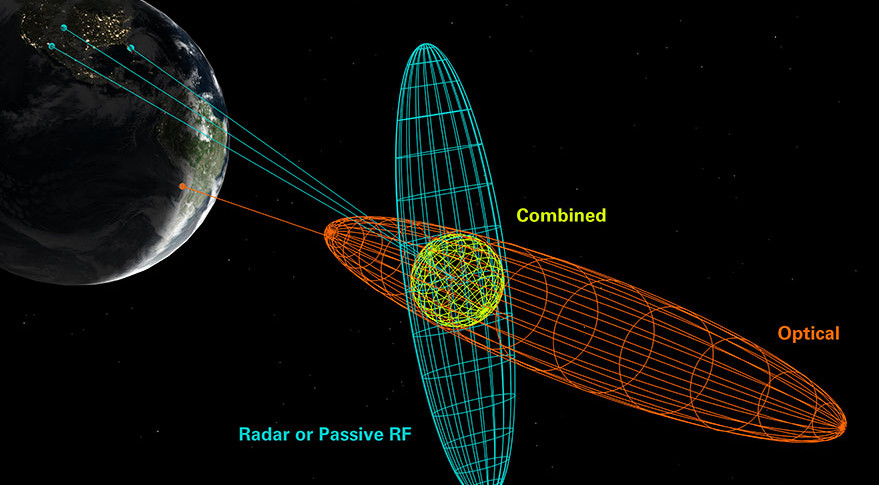US Air Force Seeks New Space Situational Awareness Data to Track Threats

WASHINGTON — The U.S. Air Force is looking for new data from commercial providers to better map satellite movements and help detect threats to U.S. military satellites, according to a Nov. 4 request for information.
In the past year, the Defense Department has been rapidly expanding the amount and type of space situational awareness data it gets from industry. The information will be used in a new space operations center, known as the Joint Interagency Coalition Space Operations Center, or JICSpOC, at Schriever Air Force Base in warfighting experiments, an Air Force official said.
The Air Force, which has long relied on its own sensors to feed space situational awareness data to the Joint Space Operations Center at Vandenberg Air Force Base, recently began a pilot program known as the Commercial Integration Cell to get more-refined data from commercial satellite operators. The Defense Department also has agreements with nine nations, two international organizations and 50 commercial entitles to exchange space situational awareness data. [Vintage US Spy Satellites Declassified (Gallery)]
With the newly established JICSpOC, the Defense Department and intelligence community plan to run exercises to help prepare for future conflicts.
"The U.S. Air Force needs processed, commercial Space Situational Awareness (SSA) data for operational use," the Nov. 4 request for information said. "SSA data must originate from non-DoD sensors and be validated on commercial systems outside of the Department of Defense network."
The Air Force has made improving its space situational awareness capabilities a top priority in light of what Pentagon officials see as an evolving threat from China and Russia. As a result, bolstering space situational awareness spending was a top priority for the White House and senior Defense Department leaders in the president's 2016 budget proposal, which included $5.5 billion over five years for space protection efforts.
Russian space activities have alarmed Defense Department officials on at least three occasions this year. The latest known incident occurred in September, when a Russian military satellite parked itself between two Intelsat satellites in geosynchronous orbit. The satellite's movements were detected months after the Air Force said it was watching two other Russian military satellites, each with maneuvering capabilities that are consistent with, but not necessarily indicative of, an on-orbit antisatellite weapon.
Get the Space.com Newsletter
Breaking space news, the latest updates on rocket launches, skywatching events and more!
In its Nov. 4 request to industry, the Air Force said the data it seeks must "provide a threat analysis for specified high interest U.S. satellites, depicting time and distance, as well as required time for a specified threat to maneuver into a threatening position."
It also must "provide predicted and real time characterization of all launch and early orbit operations, to include direct ascent anti-satellite (ASAT) threats, by determining orbital trajectories, [and] projected conjunctions with projected launch vehicle path."
The Air Force does not yet have an acquisition strategy for the data, the posting said. Industry responses are due Nov. 25.
Jennifer Thibault, a spokeswoman for the 50th Space Operations Wing, did not respond to questions from SpaceNews by press time.
Among the companies expected to respond to the Air Force's request for information are Lockheed Martin Space Systems and AGI.
Lockheed Martin, working with Australia's Electro Optic Systems, announced last year it was planning a new space object-tracking site in western Australia and hopes to sell the data to the U.S. and Australian governments. Lockheed spokesman Chip Eschenfelder confirmed Nov. 10 the company's interest in the solicitation.
AGI, an orbit-modeling software provider based in Exton, Pennsylvania, was awarded an $8.4 million Air Force contract in September for a subscription to data from the company's Commercial Space Operations Center, or ComSpOC.
This story was provided by SpaceNews, dedicated to covering all aspects of the space industry.
Join our Space Forums to keep talking space on the latest missions, night sky and more! And if you have a news tip, correction or comment, let us know at: community@space.com.
Mike Gruss is a veteran defense reporter and Editor-in-Chief of Sightline Media Group, which includes Army Times, Air Force Times, Dense News, Military Times and Navy Times. From 2013 to 2016, Mike served as a Senior Staff Writer for SpaceNews covering national security space programs and military space policy in the U.S. Congress. Mike earned a bachelor's degree in English and American Studies from Miami University and has previously wrote for the Journal Gazette in Fort Wayne, Indiana and the Virginian-Pilot in Virginia before joining SpaceNews. Prior to joining Sightline in 2017, he was a senior editor of FedTech magazine covering technology in federal government. You can see Mike's latest project on Twitter.










